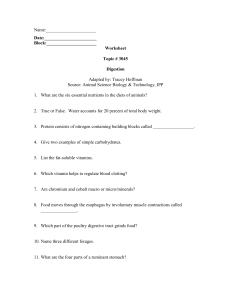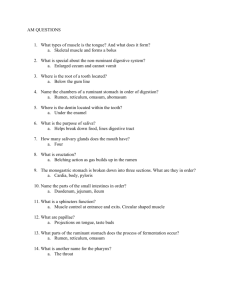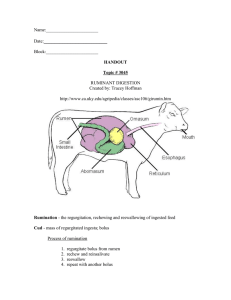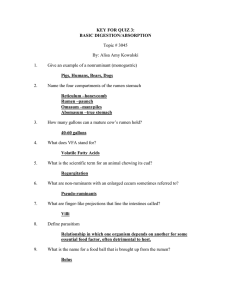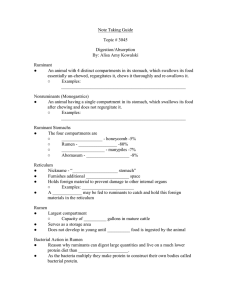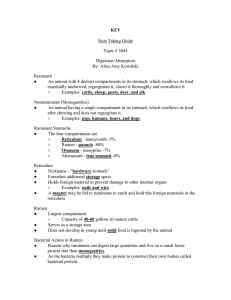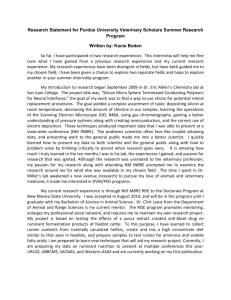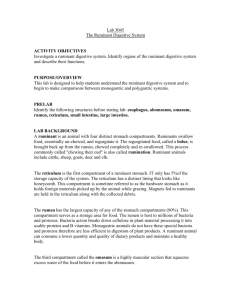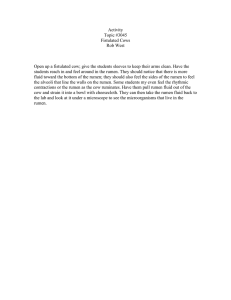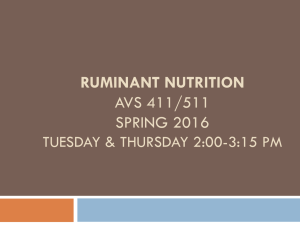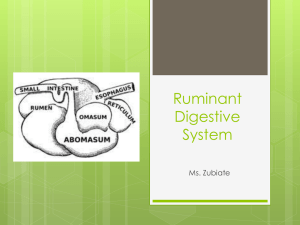Ruminant and Pseudo - 10thLargeAnimalScienceLymanHall
advertisement
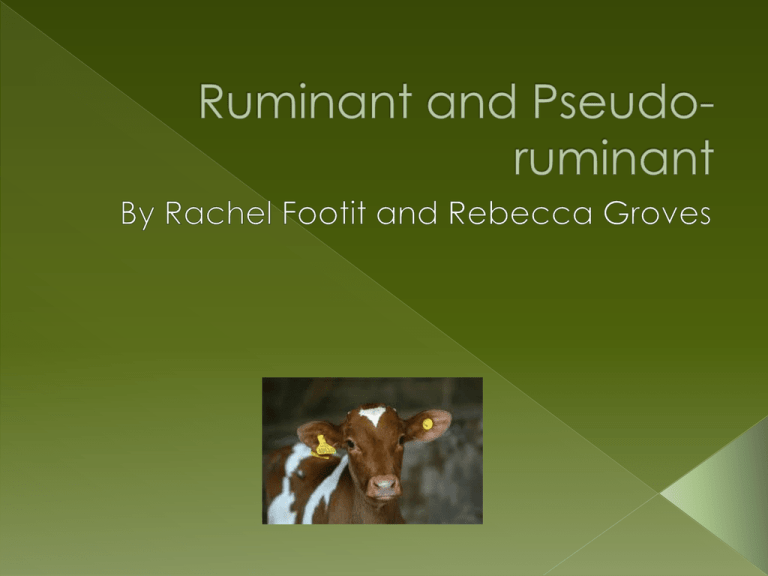
It is an animal that has 4 compartments in their stomach. It contains a rumen, reticulum, omasum, Abomasum. These are found in cattle, sheep, goats, and chickens. These help brake down lots of food when the animals eat. It’s about 60% of the stomachs. It is also has bacteria and other microbes that promote fermentation. Food will leave the rumen and get regurgitated for about 15 minutes and swallowed to the reticulum, then it will be a repeating process for about 2-3 hours. The 2nd stomach in the system. It looks like a honeycomb. It helps keep the food in the Rumen mixed with water and saliva. When that is done the mixture can move on to the other parts of the system. It looks like pages to a book. It absorbs many of the nutrients broken down in the reticulum and rumen. It removes excess water from food. It reduces the size of food particles before passing them to the Abomasum for digestion by enzymes It’s last compartment of the stomach system. It breakdowns the majority of the chemicals in the food. It also mixes in digestive enzymes The only one having glands that discharge acids and enzymes for digestion. They contain 3 compartments in their stomachs. These animals do not regurgitate or ‘chew the cud’ These animal are still similar to ruminant animals but don’t get the most nutrients out of leafy materials. Pigs, rabbits , llama, horses, and alpaca are the most known animals to be pseudoruminant. Pseudo- Ruminant animals just have a large cecum and doesn’t regurgitate their food. Ruminant animals have a rumen and do regurgitate all their food they intake. There is several parts of the stomach. There is a large Cecum, and a large intestine. Helps digest plants in the body. It absorbs water and salts from undigested food. Has a muscular wall that kneads the contents to speed up the absorption. This show that the feeds nutrients is not absorbed as much as an animal with a rumen. It is made up of mostly colons: ascending colon, transverse colon, sigmoid colon. It actively transport sodium, and absorbs water by osmosis. It holds an environment where bacteria can grow and reproduce. It will eliminate all waste, undigested, and unabsorbed material to leave the body. •http://www.umass.edu/cdl/BMPs/Basics%20for%20Livestock%20and%20Equine%20Nutrition.p df •www.afhsffa.com/blog/wp-content/uploads/2010/02/Digestion.com •http://microbezoo.commtechlab.msu.edu/zoo/zacmain.html •http://wiki.answers.com/Q/What_is_the_function_of_the_cecum •http://answers.yahoo.com/question/index?qid=1006052431266 •http://sci.waikato.ac.nz/farm/content/animalstructure.html
